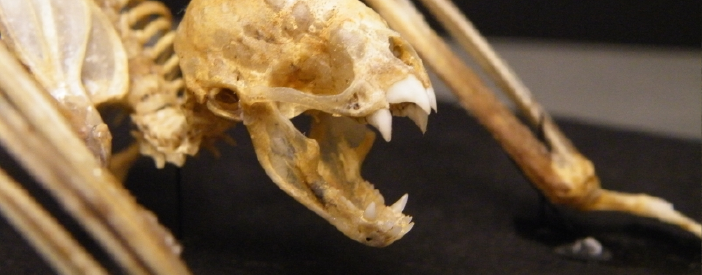Episode 19: Vampire Bats

Vampire bat (Desmodus rotundus) skeleton - Image: By Mokele [CC BY 3.0 (https://creativecommons.org/licenses/by/3.0)], from Wikimedia Commons
Vampires evoke dreams of cool nights and warm blood. For the vampire bat these dreams are reality. These nocturnal denizens of the tropics acquire their liquid nourishment from other mammals and birds. But vampires have a behavior that is far more charming. They engage in an I-will-scratch-your-back-if-you-scratch-mine form of cooperation. This cooperation takes place in their colony. If one bat had little to no success at finding food a neighbor might share his bounty by regurgitating blood from his stomach. Research has shown that the receiver will remember this kind act and might return the favor in the future. Cooperation is very common in the natural world. Lionesses, Japanese Macaques, Leaf Cutter Ants and even groups of cells exhibit cooperation. In fact scientists think that cooperation played an equal if not greater role in the typical dog-eat-dog view of the life’s evolutionary history. With your WyoBio Minute I am Zoe Nelson.

Image by: Sandstein, Via Wikimedia Commons


